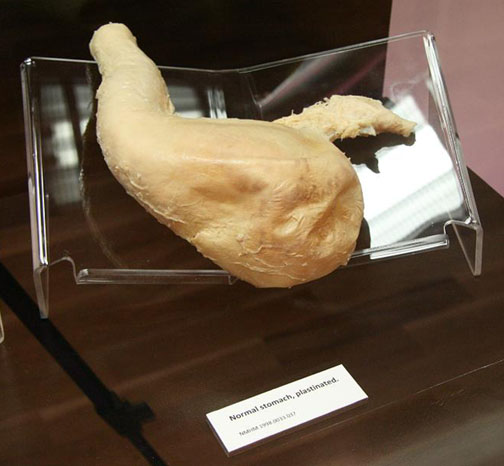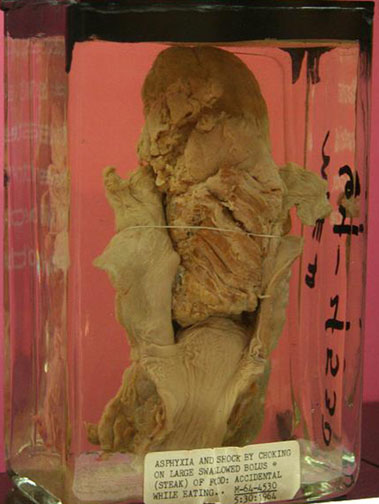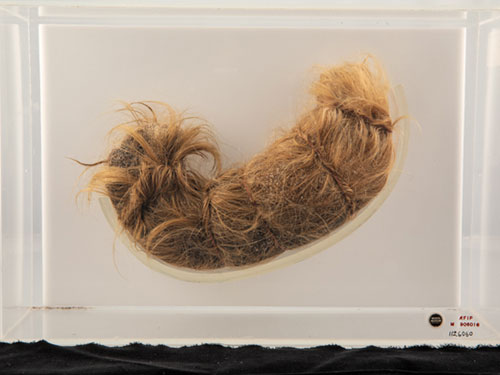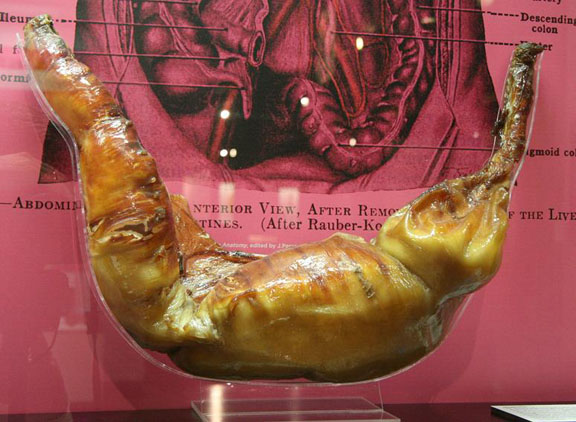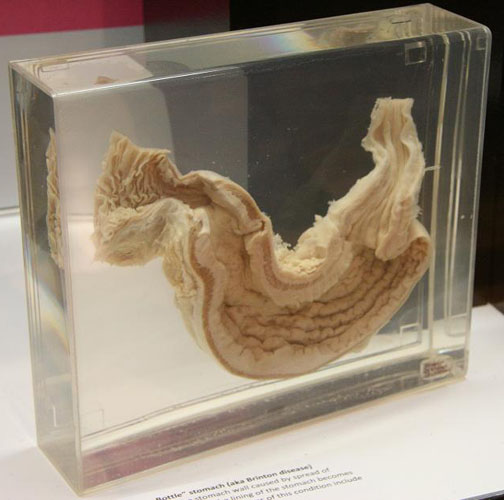Visibly Human Health and Disease in the Human Body
The Digestive System
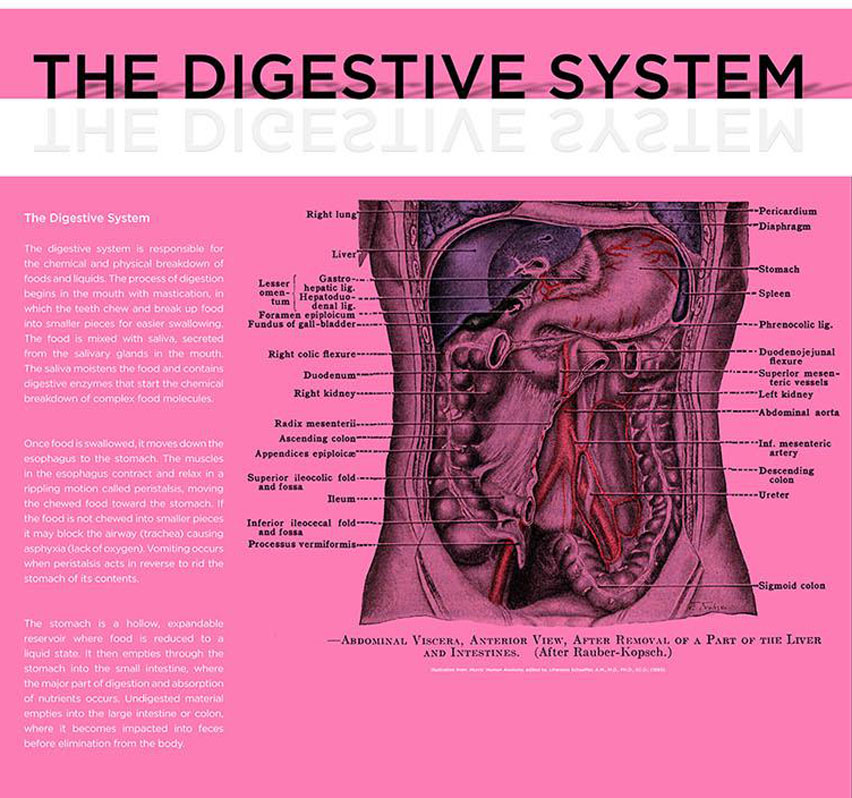 The gastrointestinal system breaks down the foods we consume into simpler substances in order to acquire essential nutrients that the body cannot produce on its own. The digestive process involves many specialized organs that include the mouth and teeth, stomach, gallbladder, spleen, pancreas, liver and small and large intestines.
The gastrointestinal system breaks down the foods we consume into simpler substances in order to acquire essential nutrients that the body cannot produce on its own. The digestive process involves many specialized organs that include the mouth and teeth, stomach, gallbladder, spleen, pancreas, liver and small and large intestines.
Digestion begins in the mouth with mastication, in which the teeth chew and break up food into smaller pieces for easier swallowing. Saliva moistens food and contains digestive enzymes that initiate the chemical breakdown of complex food molecules into smaller, simpler molecules that the body can use, such as converting complex starches into sugars.
Food moves from the throat to the esophagus and the stomach via peristalsis. The peristaltic action slowly moves the chewed food (bolus) toward the stomach. If the food bolus is not chewed into smaller pieces it may block the airway (trachea) causing asphyxia (lack of oxygen).
The stomach is an expandable reservoir that holds food for further processing. Cells in the stomach release hydrochloric acid and pepsin that further break down complex molecules to simple molecules. The mucous lining of the stomach prevents the acid from harming the stomach wall.
Food empties into the small intestine, where the major part of digestion and nutrient absorption occurs. The duodenum comprises the first 10 to 12 inches of the small intestine which has a total length of approximately 18 to 21 feet and a diameter of 1 to 2 inches. In the duodenum, bile (produced in the liver and stored in the gallbladder) and digestive enzymes (produced by the pancreas) break down the complex carbohydrate, fat and protein molecules. The released nutrients, water, vitamins and minerals are absorbed through the intestinal wall by millions of tiny protrusions called villi.

- Visibly Human Health and Disease in the Human Body
- The Cardiovascular System
- The Urinary System
- Respiratory System
- The Lymphatic System
- The Musculoskeletal System
- The Liver and Hepatic System
- The Digestive System
- The Brain and Nervous System
- Psychiatric Patients at Forest Glen
- Skeleton of Spanish American War Veteran Showing Evidence of Severe Arthritis




